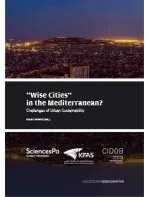Jeddah: A “Wise Old City” Facing the Challenges of Urban Requalification?

History, culture and architecture are strictly interrelated. Jointly they express the change in social and physical traditions, affecting the issue of continuity and crisis of people’s identity in urban environments. This fact is particularly evident in the southern/eastern Mediterranean and in the Gulf. As regards the Arabian Peninsula, within the culturalhistorical debate at the dawn of the new century, the “city” and its “territory” represent essential keys to the reading and re-reading of local history: thus, the field of urban studies is increasingly used as a new methodological tool to trace the roots of modern statehood, the evolution of a certain community/polity, and the socioeconomic development process. Balances and imbalances related to the dynamics and forces of a traditional dawla – a tribal state conceived as authority and power, but without fixed borders – intertwine with the local environment and social system. Therefore, academic studies investigating the town model in Arabia from pre-oil to oil era, as an urban tribal settlement first and as a “recipient of modernity” and then “a focal point for the reclaiming of an Arab-Islamic identity” (Fuccaro, 2001: 175), cannot ignore the existing interconnections in the processes of urban growth and transition from a traditional dawla into a modern state with definite territorial boundaries. A critical discourse deals with the “Gulf city model” that emerged from the transformation of the medina – the “traditional town” – into the “oil city”.